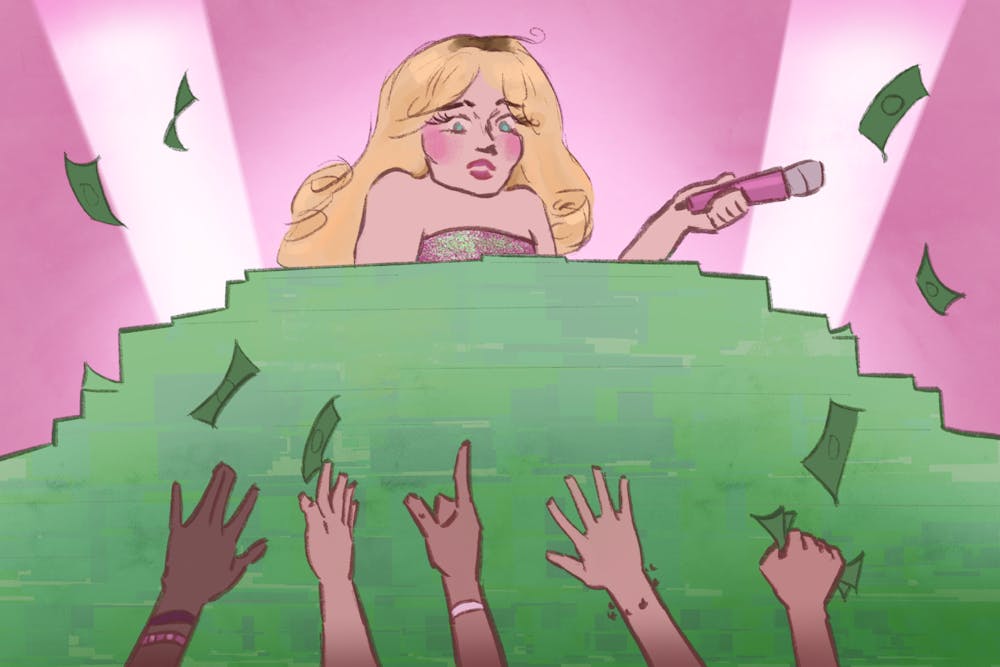The last time Sabrina Carpenter performed at the Footprint Center, an average ticket for the lower bowl sold for about $122.62. For Carpenter's return to Phoenix on Nov. 13 and 14, the same ticket will cost between $397 and $939.
As major concert ticket prices continue to skyrocket, a surprising beneficiary has emerged: small and local bands. With some fans unwilling to shell out hundreds — or even thousands — of dollars for tickets to see mainstream artists, a growing number are turning their attention to more affordable local music scenes.
This shift in audience preferences has opened new opportunities for up-and-coming artists to thrive.
With some artists' tickets boasting a hefty price tag, attending mainstream concerts has become a status symbol as the experience becomes less affordable to the average fan. This is pushing live music lovers toward local artists and bands as their concerts offer more intimate experiences.
"The difference in the people that come to those shows versus big arena tours or big stadium tours ... is astronomical, because you can tell when people are really wanting to show up and be there for the music, rather than showing up to show off that they were able to go to the concert," said AJ Schinco, a freshman studying popular music, who also performs in his own band.
Going to live concerts can now cost the same amount as taking a vacation, and prices are only rising. According to Pollstar, a trade publication that tracks the concert industry, ticket prices increased by 23% from 2022 to 2023.
"Anyone can stream a song, anyone can buy an album, but not everybody can put in the effort to come to the show and witness you do it live," Schinco said. "Coming from somebody whose dream is to do that in the long term, that is really important (to me)."
Smaller venues offer significantly lower ticket prices, usually ranging from $10 to $50, providing an accessible alternative for fans who still crave live music experiences. These intimate settings also allow audiences to form personal connections with performers, an element lost in massive stadium productions.
"The beauty of local shows is you start to see familiar faces as you go to these shows," said Finn Howe, president of Amp, an ASU club aimed at supporting local arts through free concerts. "You start to know the bands on a personal level."
The shift in concert trends could mark the beginning of a cultural change for local music scenes. As fans seek more authentic, accessible and affordable experiences, they're rediscovering the joys of supporting homegrown talent.
"You might not be able to afford a concert to Taylor Swift or Chappell Roan, (but) there are lots of opportunities and concerts around the Valley that just don't get as much attention here, that are, a lot of times, free or really cheap," Howe said.
Small artists are also benefiting by working with established performers. With popular artists like girl in red selling out tours, the smaller artists she brings on, like The Beaches, often gain popularity afterward.
Local performers, often overshadowed by chart-topping giants, are now finding themselves in the spotlight: whether it's through small venues or being opening acts for bigger bands. Still, many concert-goers are still curious about where the industry is heading as attendance costs only rise.
One direction fans hope the industry moves toward is festivals, which are notorious for using big-name artists as headliners and supporting small, local bands in their following lineups. This dynamic has the potential to foster a more diverse and inclusive music industry, where emerging artists have the chance to shine.
"I think what is going to happen is that these festivals are going to grow exponentially within the next 10 years," said Matai Kleinman, a freshman studying popular music. "Festivals are going to be a lot more reliable and a way more effective use of people's money. So (fans will be) able to see a variety of artists — and not only that but diversify their music taste and music experience."
For music lovers, the takeaway is clear: if you're priced out of seeing the biggest stars, your next favorite artist might just be playing at a venue down the street. And for small performers, the rising cost of big concerts may be the unexpected break you've been waiting for.
Edited by Andrew Dirst, Abigail Beck and Natalia Jarrett.
Reach the reporter at thutche1@asu.edu.
Like The State Press on Facebook and follow @statepress on X.
Tiffany is a freshman studying fashion design in business administration. This is her second semester with The State Press.




